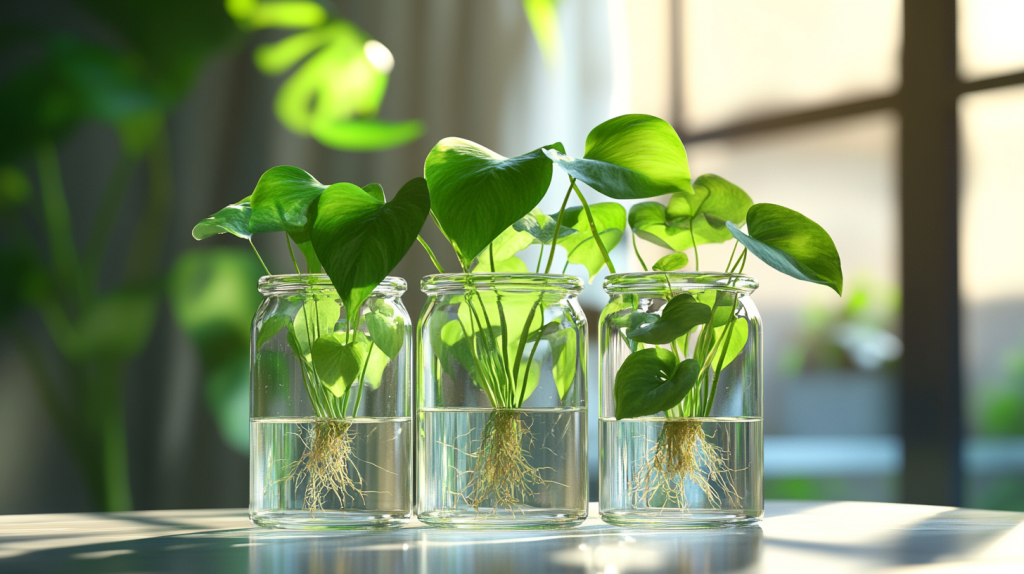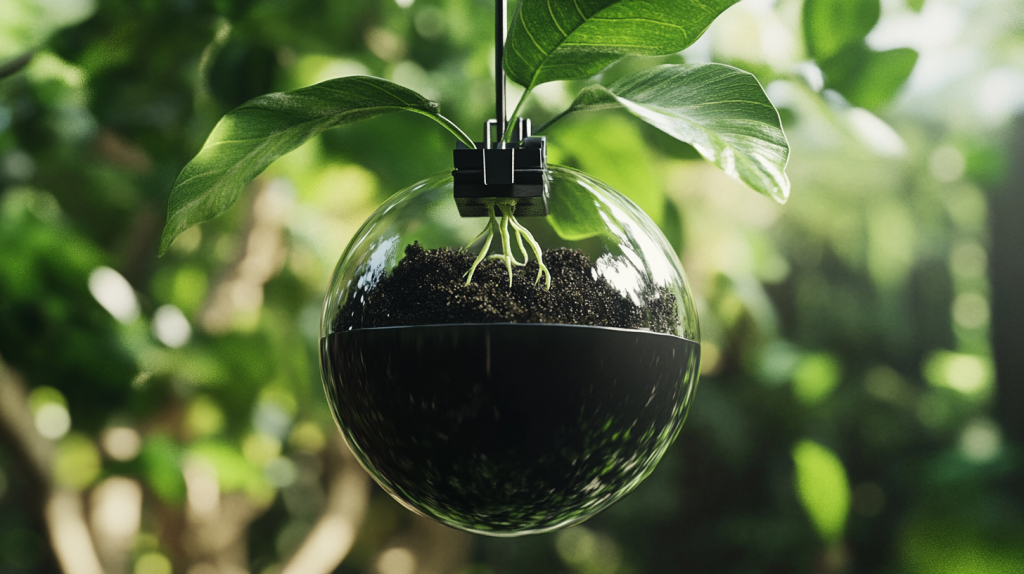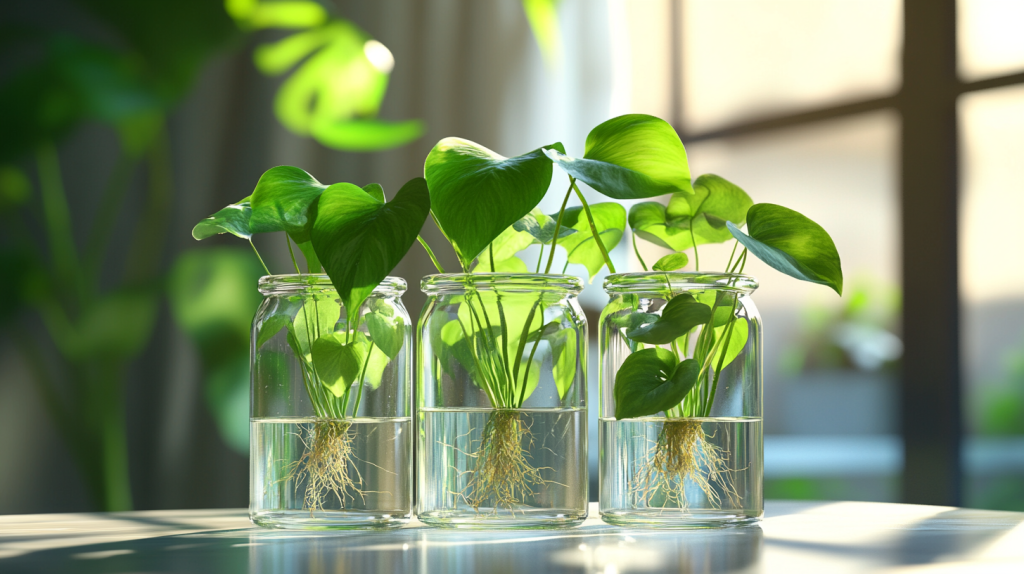Expansion of your indoor garden is as easy as using what you may already have: your existing plants. Plant propagation is well understood as a skill and craft of reproducing plants from various stock, seeds, cuttings, etc. To the indoor gardener, plant propagation is not only one of the most satisfying of all horticultural processes, but one of the cheapest ways available of adding to one’s stock of indoor plants. Some of the simple methods of propagating indoor plants successfully and the introduction of the Plant Rooting Ball are illustrated in this article.
What is Plant Propagation?
Plant propagation may be defined as the technique of producing new plants from parent plants, either by sexual means, which involves the seeds, or by asexual means: Those propagation techniques include; cuttings, division and layering. Sexual reproduction however is not very popular in indoor gardening because it can only ensure the same features as those of the mother plant in asexual reproduction. If you want to increase the number of plants in your indoor garden, or pot up a plant to give to a friend, or re-pot a plant that is becoming too crowded, propagation is both fun and rewarding. The best part? Most of the techniques are easy to implement and easy to perform and do not necessarily need many tools.
Techniques of Planting of Indoor Plants
The fact is that there are several ways of plant propagation indoors and all of them can be applies for different plants according to their type of growth. Here are the most popular methods:
1. Stem Cuttings
This is one of the easier and more common methods of propagation. Here is how it works:
- Cut a healthy stem just below a node-the point where leaves attach to the stem.
- Remove the lower leaves and place the stem in water or directly into moist soil.
- Keep the setup in indirect sunlight and monitor root growth over the next few weeks.
Best Plants for Stem Cuttings:
- Pothos: Known for its quick root development in water.
- Philodendron: Great for both soil and water propagation.
- Monsteras: Especially Monstera deliciosa, which thrives with node cuttings.
- Spider Plants: Often sprout roots rapidly in water.

2. Leaf Cuttings
Ideal for plants with thick, fleshy leaves. Here is how it works:
- Cut a healthy leaf with a portion of its stem or petiole.
- Insert the cut end into moist soil.
- Mist the soil regularly to keep it humid.
Best Plants for Leaf Cuttings:
- African Violets: Root well with a small stem attached to the leaf.
- Succulents (like Jade Plants or Echeveria): Often propagated from whole leaves laid on soil.
- Sansevieria (Snake Plants): Leaf segments can be inserted into soil for propagation.
3. Division
Ideal for upright growing crops and those that form tuft like structures or have tuberous stem. Here is how it works:
- Take out the plant from the pot and split it into smaller portions, seeing that every portion contains both root and shoot.
- Replant the sections into individual pots with fresh soil.
Best Plants for Division:
- Peace Lilies: Naturally form clumps that can be divided easily.
- ZZ Plants: Known for their tuberous roots that can be split.
- Boston Ferns: Thrive after being divided into smaller segments.
- Snake Plants: Can be divided at their rhizomes for new growth.
Root Health: The Beating Heart of Propagation
Healthy root development forms the basis for any successful plant propagation. Good roots ensure the new plant is capable of a proper water and nutrient uptake, thus ensuring its establishment in its new surroundings.
Improvement of Root Health by the Aid of Plant Propagation Tools-Plant Rooting Ball
The Plant Rooting Ball is a modern, highly efficient plant propagation tool developed to provide optimum conditions for rooting. Working Mechanism The rooting ball works as explained below. Here is how it helps:
- The rooting ball safely wraps a stem or branch, with a suitable growth medium inside, such as moist soil or sphagnum moss.
- It maintains consistent moisture and a stable environment, which promotes healthy root development.
- In simple words, once the roots have developed, the branch can be excised and used to start a new plant.
This tool is really great if the plants themselves are a little tougher to propagate like Fiddle Leaf Figs or Rubber Trees.

Additional Suggestions on Plant Propagation
Thus, for propagation to be effective, it will strictly mean supplying the appropriate environment for your new plants to form roots and establish. Here are some basic tips:
- Light: The kind of light that will now be required for your new plants should be bright but should not be direct. Young tender growths are susceptible to scorching by direct sunlight.
- Humidity: The general procedure of plant rooting is best carried out in humidity most plants as it is obvious from the experiment. Try a humidity dome or put the cuttings in a plastic container to form a mini greenhouse environment.
- Temperature: It should be relatively warm, 65-75 ?F (18-24 ?C) in order for root development to take place.
- Watering: The soil should be moist at all times but not waterlogged. The danger of pouring too much water is root rot.
- Timing: It is best to propagate during the growing season if you want the hybrids to achieve maximum growth.
- Transplanting: After the cuttings are established and have root systems of 2-4 inches long when propagated from water, take them out of the water and potted. It is very important that young for heir tender stems and roots be handled carefully.
Wrapping Up
Plant propagation is one of my favourite pastimes for expanding my indoor garden collection, using less money, plus it gives you much deeper feelings towards your plants. Most plants could be grown anew with success using one or more of the following basic methods: those are through stem cuttings, through leaf cuttings, and through division. Again, remember that in some types of propagations especially if there’s a development of strong root calls like the Plant Rooting Ball, it becomes even easier. From a propagators perspective whether it be to try and push that green thumb a little further, wanting to share the love and passion of plants with others or even for the mere satisfaction of bring new life into the world, propagation is easy and a whole lot of fun.
